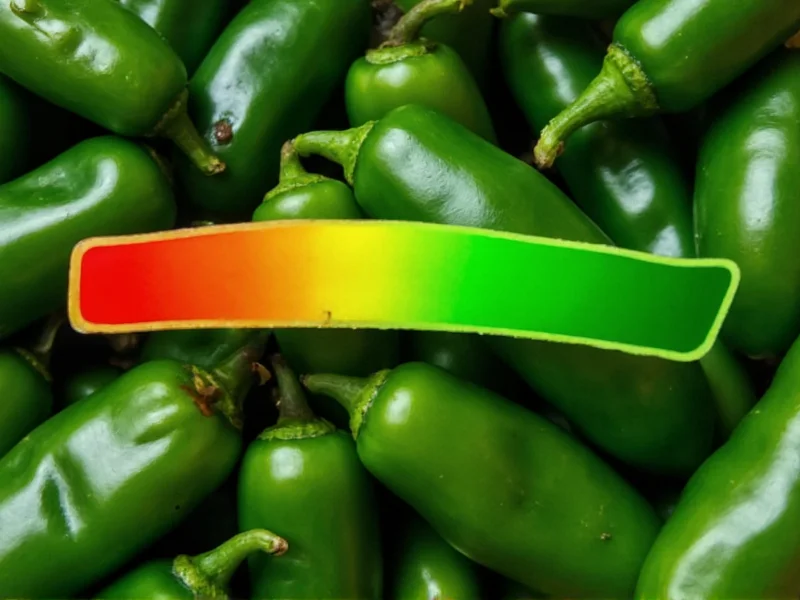Understanding pepper heat levels is essential for both culinary enthusiasts and casual cooks. The jalapeño, one of the most popular chili peppers worldwide, offers a distinctive flavor profile with just the right amount of heat for many dishes. This comprehensive guide explores everything you need to know about jalapeño heat levels, helping you make informed decisions in your kitchen.
The Scoville Scale: Measuring Pepper Heat
Developed by pharmacist Wilbur Scoville in 1912, the Scoville scale measures the pungency or spiciness of chili peppers and other spicy foods. The scale works by diluting pepper extract in sugar water until the heat is no longer detectable by a panel of tasters. The degree of dilution determines the Scoville Heat Units (SHU).
Modern laboratories now use high-performance liquid chromatography (HPLC) to measure capsaicinoids—the compounds responsible for heat in peppers—providing more precise measurements that are then converted to Scoville units for consistency with historical data.
Understanding Jalapeño Heat Range
Jalapeños occupy a specific range on the Scoville scale, typically registering between 2,500 and 8,000 SHU. This places them firmly in the mild to medium category of chili peppers. To put this in perspective:
| Pepper Type | Scoville Heat Units | Relative Heat Level |
|---|---|---|
| Bell Pepper | 0 SHU | No heat |
| Jalapeño | 2,500-8,000 SHU | Mild to medium |
| Serrano | 10,000-23,000 SHU | Medium to hot |
| Habanero | 100,000-350,000 SHU | Very hot |
| Ghost Pepper | 855,000-1,041,427 SHU | Extremely hot |
What makes jalapeños particularly interesting is their significant variation within their heat range. Two jalapeños from the same plant can have noticeably different heat levels, which explains why you might experience inconsistent spiciness when cooking with them.
Factors That Influence Jalapeño Heat Levels
Several key factors determine how hot your jalapeños will be:
Growing Conditions
Environmental stress actually increases capsaicin production in peppers. Jalapeños grown in hotter, drier conditions with less water tend to be significantly hotter than those grown in ideal, consistent conditions. Soil composition and nutrient availability also play roles in determining final heat levels.
Ripeness
As jalapeños mature and change color from green to red, their heat level increases. Red jalapeños are typically hotter than their green counterparts, though they also develop more sweetness and complex flavor notes. The red variety often contains more capsaicinoids, particularly in the placental tissue surrounding the seeds.
Genetic Variation
Even within the same variety, genetic differences between plants can lead to varying heat levels. Some jalapeño cultivars have been specifically bred for milder or hotter profiles to suit different culinary applications and consumer preferences.
Part of the Pepper
The heat isn't evenly distributed throughout the pepper. The highest concentration of capsaicin is found in the white pithy ribs and seeds (the placenta), not in the flesh itself. When preparing jalapeños, removing these parts significantly reduces the overall heat level while preserving much of the pepper's distinctive flavor.
Practical Implications for Cooking
Understanding jalapeño heat level helps you use them effectively in recipes. For those sensitive to spice, consider these practical tips:
- Always wear gloves when handling hot peppers to prevent skin irritation
- Remove seeds and white membranes to reduce heat by up to 80%
- Soak sliced jalapeños in salt water or vinegar to mellow their heat
- Pair with dairy products like yogurt or sour cream to counteract spiciness
- Start with small amounts and taste as you go—you can always add more heat but can't remove it
Chefs often use jalapeños in salsas, nachos, poppers, and as a flavor enhancer in numerous Mexican and Southwestern dishes. Their moderate heat level makes them versatile enough for everyday cooking while still providing that characteristic chili kick.
Safety Considerations When Handling Jalapeños
While jalapeños aren't among the world's hottest peppers, they can still cause discomfort if mishandled. Capsaicin, the compound responsible for heat, can transfer to your skin and eyes, causing burning sensations.
Always wash your hands thoroughly with soap after handling jalapeños, and avoid touching your face. If you experience skin irritation, apply milk or a dairy product to the affected area, as the casein protein helps break down capsaicin. For eye exposure, flush with water and seek medical attention if irritation persists.
Why Understanding Jalapeño Heat Matters
Knowing the precise jalapeño heat level on Scoville scale helps home cooks and professional chefs alike create balanced dishes that appeal to various palates. The moderate heat of jalapeños makes them an excellent entry point for those developing a taste for spicy foods, while still offering enough kick to satisfy those with higher spice tolerance.
When selecting jalapeños at the market, look for firm, bright green specimens with smooth skin. Avoid peppers with wrinkles or soft spots, which indicate age and potential flavor degradation. For consistent heat in recipes, consider using jalapeño powder or canned jalapeños, which offer more standardized heat levels than fresh peppers.











 浙公网安备
33010002000092号
浙公网安备
33010002000092号 浙B2-20120091-4
浙B2-20120091-4